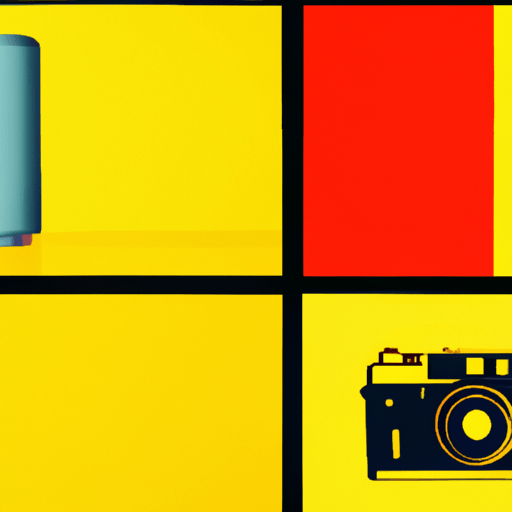
-
Table of Contents
- Effective Use of Negative Space in Design
- The Power of Negative Space
- Examples of Effective Use of Negative Space
- 1. FedEx Logo
- 2. Apple’s “Think Different” Campaign
- 3. Nike’s “Just Do It” Slogan
- Best Practices for Using Negative Space
- 1. Give Elements Room to Breathe
- 2. Use Negative Space to Guide the Eye
- 3. Experiment with Scale and Proportion
- 4. Use Negative Space to Create Hidden Meanings
- Conclusion
Effective Use of Negative Space in Design

When it comes to design, it’s not just about what you include, but also what you leave out. Negative space, also known as white space, is the area around and between the elements in a design. It is the empty space that gives breathing room to the composition and allows the viewer’s eyes to rest. While it may seem counterintuitive, negative space plays a crucial role in creating effective and impactful designs. In this article, we will explore the importance of negative space in design and how it can be used effectively to enhance visual communication.
The Power of Negative Space
Negative space is not just an absence of content; it is a powerful tool that can significantly impact the overall design. Here are some key reasons why negative space is essential:
- Enhances readability: Negative space helps separate different elements and improves legibility. By giving each element its own space, it becomes easier for the viewer to understand and process the information.
- Focuses attention: When used strategically, negative space can draw attention to the main subject or message of the design. By surrounding the focal point with empty space, it becomes more prominent and stands out.
- Creates balance: Negative space plays a crucial role in achieving visual balance in a design. It helps distribute the elements evenly and creates a sense of harmony. Without negative space, a design can feel cluttered and overwhelming.
- Evokes emotions: Negative space can evoke emotions and create a specific mood. By using empty space effectively, designers can convey a sense of calmness, elegance, or even tension.
Examples of Effective Use of Negative Space
Let’s take a look at some real-world examples of how negative space has been used effectively in design:
1. FedEx Logo
The FedEx logo is a classic example of using negative space to create a hidden message. At first glance, it appears to be a simple text-based logo. However, if you look closely, you’ll notice an arrow formed between the letters ‘E’ and ‘x.’ This clever use of negative space not only adds visual interest but also conveys the company’s focus on speed and efficiency in their delivery services.
2. Apple’s “Think Different” Campaign
Apple’s iconic “Think Different” campaign featured black and white portraits of influential figures with a simple tagline. The use of negative space in these ads allowed the viewer’s attention to be solely focused on the subject’s face and the tagline. By eliminating any distractions, Apple effectively communicated their message of individuality and innovation.
3. Nike’s “Just Do It” Slogan
Nike’s famous “Just Do It” slogan is often accompanied by a simple, minimalistic design. By using negative space, Nike creates a sense of simplicity and elegance. The empty space around the slogan allows it to stand out and become the central focus of the design, reinforcing the brand’s message of determination and action.
Best Practices for Using Negative Space
Now that we understand the power of negative space, let’s explore some best practices for using it effectively in design:
1. Give Elements Room to Breathe
One of the fundamental principles of using negative space is to give each element enough room to breathe. Avoid overcrowding the design with too many elements or text. Instead, provide ample space around each element to create a sense of clarity and organization.
2. Use Negative Space to Guide the Eye
Negative space can be used to guide the viewer’s eye through the design. By strategically placing empty space, you can create a visual path that leads the viewer from one element to another. This technique is particularly useful in website design, where negative space can be used to direct the user’s attention to important sections or call-to-action buttons.
3. Experiment with Scale and Proportion
Playing with the scale and proportion of elements in relation to negative space can create visual interest and impact. By juxtaposing large elements with ample negative space, you can create a sense of drama and emphasis. Conversely, using small elements with generous negative space can convey a feeling of delicacy and elegance.
4. Use Negative Space to Create Hidden Meanings
As seen in the FedEx logo example, negative space can be used to create hidden meanings or messages within a design. This adds an extra layer of intrigue and engages the viewer on a deeper level. However, it’s important to ensure that the hidden message is not too obscure or difficult to decipher.
Conclusion
Negative space is a powerful tool in design that should not be overlooked. By understanding its importance and implementing it effectively, designers can create visually appealing and impactful designs. Negative space enhances readability, focuses attention, creates balance, and evokes emotions. Through real-world examples and best practices, we have seen how negative space can be used to enhance visual communication and convey powerful messages. So, the next time you embark on a design project, remember to embrace the power of negative space and let it work its magic.
